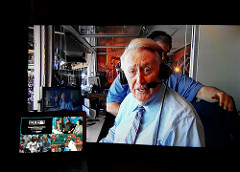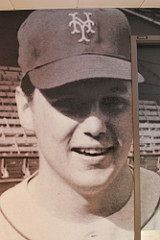It’s back to Cleveland for Game Six – as the Cubs stayed alive with a classic 3-2 victory in Game Five at Wrigley field (and now trail the Indians three games-to-two). The tension-filled contest – described as “high anxiety” by Cubs’ first-sacker Anthony Rizzo had something for everyone:
- 23 strikeouts for those who love power pitching;
- Home runs by both teams’ third basemen – the Indians’ Jose Ramirez and Cubs’ Kris Bryant;
- A measure of small ball – what proved to be the winning run moved to third on a bunt single and scored on a sacrifice fly;
- A handful of great fielding plays (particularly on the Cubs’ side by David Ross, Anthony Rizzo, Jason Heyward and Kris Bryant);
- Seven stolen bases;
- Plenty of strategy – pitching changes, pinch hitters, double switches; and
- Particularly rousing crowd renditions of Take Me Out to the Ball Game and Go, Cubs, Go!
Now it’s on to Cleveland, with the Cubs’ Jake Arrieta (18-8, 3.10 in the regular season) facing the Indians’ Josh Tomlin (13-9, 4.40). Unfortunately for Chicago, even if they take Game Six, they still can’t win the Series without beating Cleveland ace Corey Kluber – slated to start Game Seven against NL Era champ Kyle Hendricks. For now, it’s simply “Game on.”
Starting Pitchers Come Out Firing Bullets
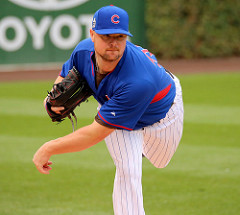
Photo by apardavila 
Jon Lester and Trevor Bauer were throwing bullet right from the start. Lester struck out the side in order in the first inning, while Bauer fanned two in his 1-2-3 start. In that first frame both starters threw 13 pitches, ten strikes. Bauer ran low on ammo for a brief period in the bottom of the fourth, but it was a well-pitched game on both sides. Lester’s final line in victory: six innings pitched, four hits, two runs, no walks and five strikeouts.
Turning Point

Kris Bryant hit a game-tying long ball to lead off the Cubs’ three-run inning. Photo by apardavila 
Pretty easy call on the turning point in this one – the bottom of the fourth, when the Cubs finally put a few hits together and scored their only runs of the game. Down 1-0, Cub’s 3B Kris Bryant led off with a game-tying home run to left-center off Indians’ starter Trevor Howard. The second half of “Bryzzo” – 1B Anthony Rizzo – followed with a double off the ivy in right field. That hit seemed to rattle Bauer, who went to 3-0 on LF Ben Zobrist before giving up another single to right. Then, with Rizzo on third and Zobrist on first, SS Addison Russell beat out a grounder to third, scoring Rizzo. RF Jason Heyward then fanned (one of three strikeouts he would have on the day), before 2B Javier Baez loaded the bases with a bunt single. C David Ross (playing his last game ever at Wrigley – the 39-year-old is retiring after this season) then drove in what would prove to be the winning run with a sacrifice fly to left. P Jon Lester, the eighth Cubs’ batter of the inning made the final out – and the Cubs led 3-1.
I would actually extend this turning point to the top of the fifth. Once the Cubs put some runs on the board, it was important that they keep the momentum and hold the Indians at bay in the top of the fifth. Cleveland LF Carlos Santana started the inning with a double off Lester and went to third on 3B Jose Ramirez’ groundout to short. It looked like the Indians were going to come right back with a score. But Lester shut the door with a strikeout of RF Brandon Guyer and a ground out (short-to-first) buy C Roberto Perez. That, to me, was a critical inning in this game.
Seven Stolen Bases

Rajai Davis- Three Steals. Photo by Keith Allison 
Both teams brought their running game – totaling seven steals. AL regular-season stolen base leader (43 SB) CF Rajai Davis stole three bags, including second and third in the sixth (he would eventually score). The Cubs stole four bases; one each by 3B Kris Bryant and CF Dexter Fowler and two by RF Jason Heyward (who nabbed second and third in the bottom of the eighth. Notably, the Indians’ sixth-inning rally was cut short when David Ross threw out Indians’ SS Francisco Lindor on an attempted steal of second.
Both Managers All-In
Clearly both managers were all-in for this one – as both closers (Indians’ Cody Allen and Cubs’ Aroldis Chapman) were in the game by the seventh inning. Allen struck out four in 1 2/3 scoreless innings, while Chapman fanned four in 2 2/3 innings for the save. It was the first eight-out save of his career.
Cubs’ closer Aroldis Chapman three 42 pitches, 26 for strikes – including a World Series’ single-game record of 19 pitches of at least 100 mph, During the regular season, Chapman (according to Statcast) threw MLB’s 30 fastest pitches – including one at 105.1 MPH.
David Ross’ Final Game at Wrigley
Thirty-Nine-Year-old Cubs’ catcher David Ross (Jon Lester’s designated catcher) – nicknamed “Grandpa Rossy” by the youngsters that man the Cubs lineup – is retiring after the Series (and after 15 MLB seasons, the last two with the Cubs). In his last game at Wrigley, he drove in what proved to the winning run with a fourth inning sacrifice fly, called a great game for Jon Lester and cut short an Indians’ rally by throwing out the speedy Francisco Lindor on a steal attempt to end the sixth inning. For his career, Ross played in 883 games, hitting .229 with 106 home runs and 314 RBI. For the Cubs this year, he hit .229-10-32 in 67 games.
Pearl Jam Front Man Salutes David Ross
Pearl Jam front man Eddie Vedder was called on to lead the seventh-inning rendition of Take Me Out to the Ball Game – and he dedicated his efforts to popular (and retiring) 39-year-old Cubs’ catcher David Ross. “There’s one guy in particular I want to sing my *** off for. He’s number three. He’s behind the plate. He may retire, but he’ll never quit. Mr. David Ross, I’d like to belt this one out for you. It’s his last game at Wrigley, let’s sing it for him.”
World Series Flashback
In the 1973 World Series, as the Oakland A’s topped the New York Mets four games to three, Oakland reliever Darold Knowles set a record that can be tied, but will never be topped. Knowles pitched in all seven games of the Series, picking up a pair of saves.
GAME ONE – Knowles came on in the top of the ninth with one on and one out and the A’s up 2-1. He retired PH Jim Beauchamp and 3B Wayne Garrett on fly outs for the save.
GAME TWO – Knowles took the mound in the top of the sixth with the bases loaded one out and the Mets up 4-3. Knowles got PH Jim Beauchamp to ground to the mound, but Knowles threw wildly to the plate, with two runs scoring on the error. He then struck out lead-off hitter 3B Wayne Garrett, intentionally walked 2B Felix Millan and got RF Rusty Staub on a fly out. (Staub hit .423 for the Series, with 11 hits in seven games.) Knowles stayed in and pitched a scoreless seventh. The A’s eventually lost 10-7 in 12 innings.
GAME THREE – Knowles came in for Catfish Hunter in the seventh inning, with Oakland down 2-1. He pitched two scoreless innings in a game Oakland won 3-2 in 11 innings.
GAME FOUR – Knowles came on in the bottom of the fourth with two on, none out, and New York up 3-1. He struck out P Jon Matlack, then hit 3B Wayne Garrett with a pitch loading the bases. Then 2B Dick Green’s error allowed Mets’ 2B Felix Millan to reach, scoring CF Don Hahn. RF Rusty Staub followed with a two-run singls and LF Cleon Jone walked before Knowles got 1B John Milner to hit into a 1-2-3 double play. The A’s eventually lost 6-1.
GAME FIVE – Knowles came in with two outs in the sixth inning, the A’s down 2-0, and a runner on third. He intentionally walked number-eight hitter SS Bud Harrelson and fanned P Jerry Koosman. The Mets won this one 2-0.
GAME SIX – Knowles took the mound with one out in the eighth, a runner on first and the A’s up 2-0. He gave up singles to 3B Wayne Garrett and 2B Felix Millan (scoring a run), before fanning RF Rustu Staub. Rollile fingers then came in to get the last out of the inning. The A’s won 3-1.
GAME SEVEN – Knowles came in with two outs in the top of ninth, the A’s up 5-2, runners on first and third, and the top of the Mets’ batting order coming up. He got 3B Wayne Garrett to pop up, ending the inning, giving the A’s the Series and earning the save.
For the Series, Knowles pitched in seven games – giving up four hits and five walks in 6 1/3 innings – but only one unearned run – while fanning five. (ERA 0.00). On the season, Knowles appeared in 52 games (five starts), going 6-8 with nine saves and a 3.09 ERA.
Side Note: Willie Mays, then with the Mets, got his final at bat in the major leagues in the Series – grouding into a force out to end the tenth inning of Game Three. Mays went two-for-seven in the Series, with one run and one RBI.
I tweet baseball @DavidBBRT
Member: Society for American Baseball Research (SABR); The Baseball Reliquary; Baseball Bloggers Alliance.
Ieball Bloggers Alliance.
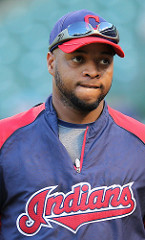
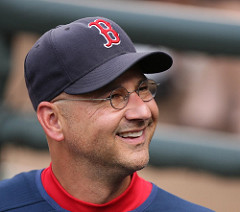
![[Roger Peckinpaugh, New York AL (baseball)] (LOC) by The Library of Congress Roger Peckinpaugh photo](https://baseballroundtable.com/wp-content/uploads/2016/10/3478751816_49b6aea065_m_Roger-Peckinpaugh-1.jpg)
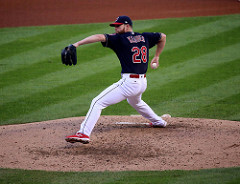
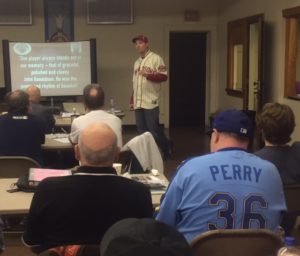

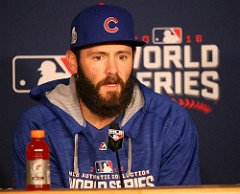
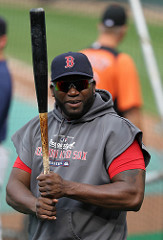
 In the 1957 World Series – the first I ever attended – Milwaukee Braves’ right-hander Lew Burdette started Games Two, Five and Seven. Three starts in eight days versus a highly-favored Yankee squad that included the likes of Mickey Mantle, Yogi Berra, Elston Howard and Moose Skowron. Burdette tossed three complete games – winning all three (including shutouts in Games Five and Seven), giving up only two runs in 27 innings (0.67 ERA)
In the 1957 World Series – the first I ever attended – Milwaukee Braves’ right-hander Lew Burdette started Games Two, Five and Seven. Three starts in eight days versus a highly-favored Yankee squad that included the likes of Mickey Mantle, Yogi Berra, Elston Howard and Moose Skowron. Burdette tossed three complete games – winning all three (including shutouts in Games Five and Seven), giving up only two runs in 27 innings (0.67 ERA) 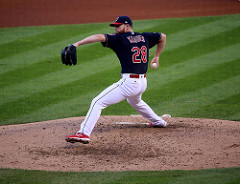
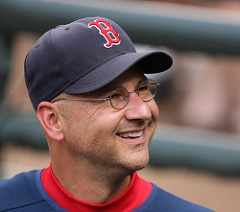
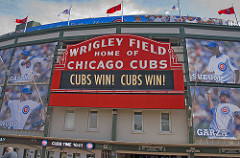


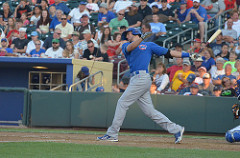
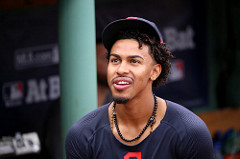
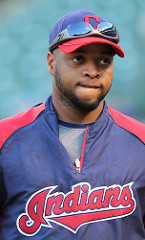
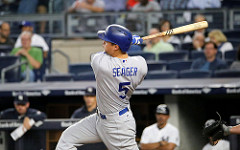
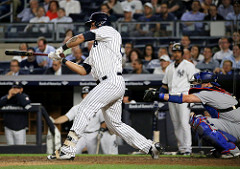
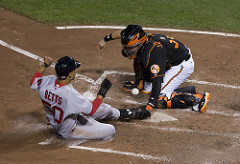
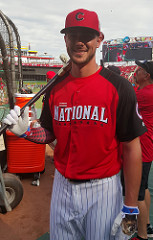

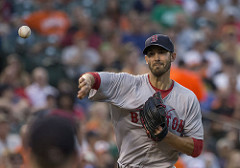
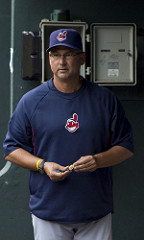

 There were no tight Divisional races as September came to a close. Your Division champs were the Indians, Red Sox, Rangers, Nationals, Cubs and Dodgers – and, as of September 30, all had leads of at least five games (Red Sox over Orioles), with the Cubs having the largest margin at 18 ½ games over the second-place Cardinals.
There were no tight Divisional races as September came to a close. Your Division champs were the Indians, Red Sox, Rangers, Nationals, Cubs and Dodgers – and, as of September 30, all had leads of at least five games (Red Sox over Orioles), with the Cubs having the largest margin at 18 ½ games over the second-place Cardinals.




